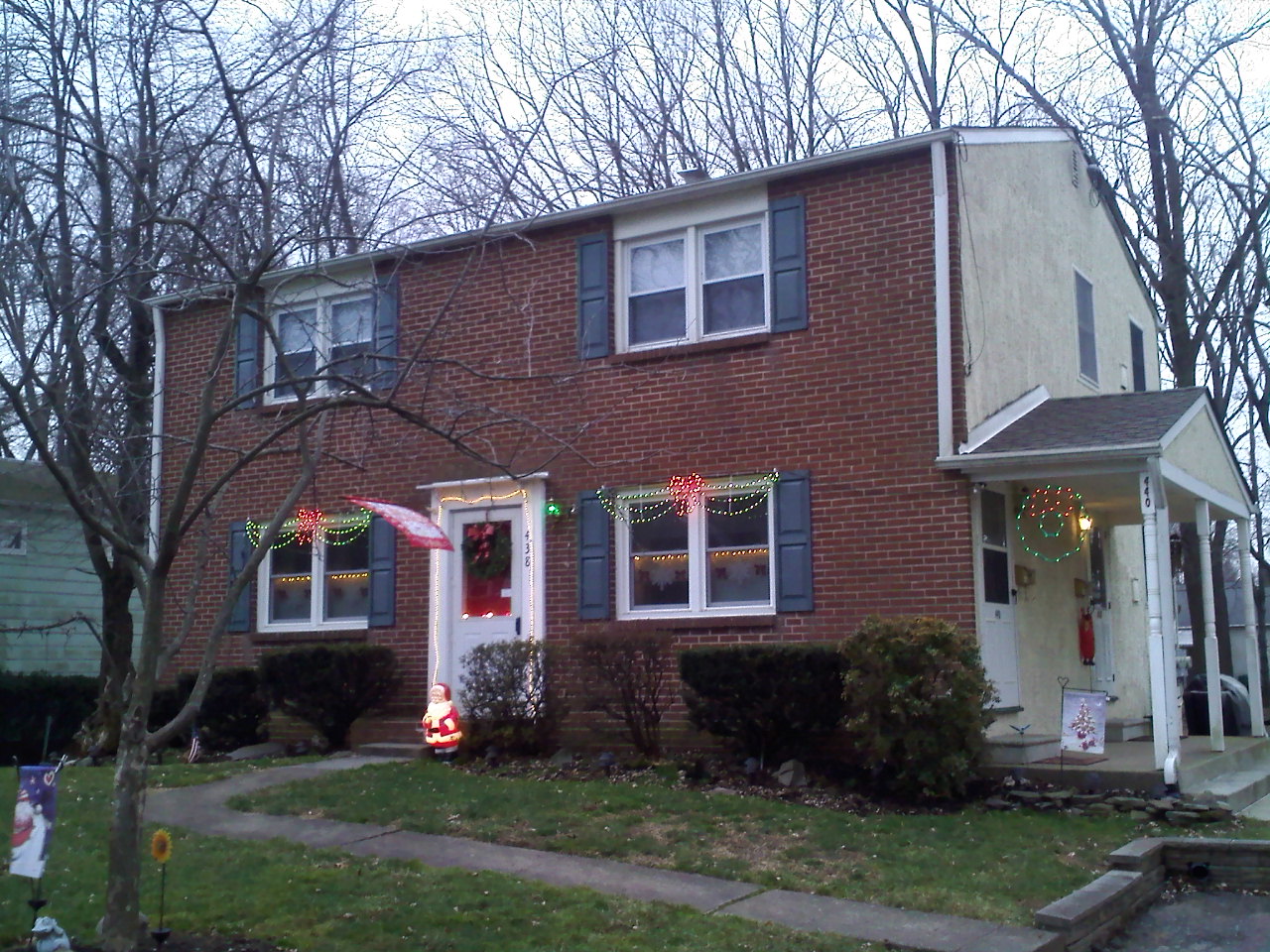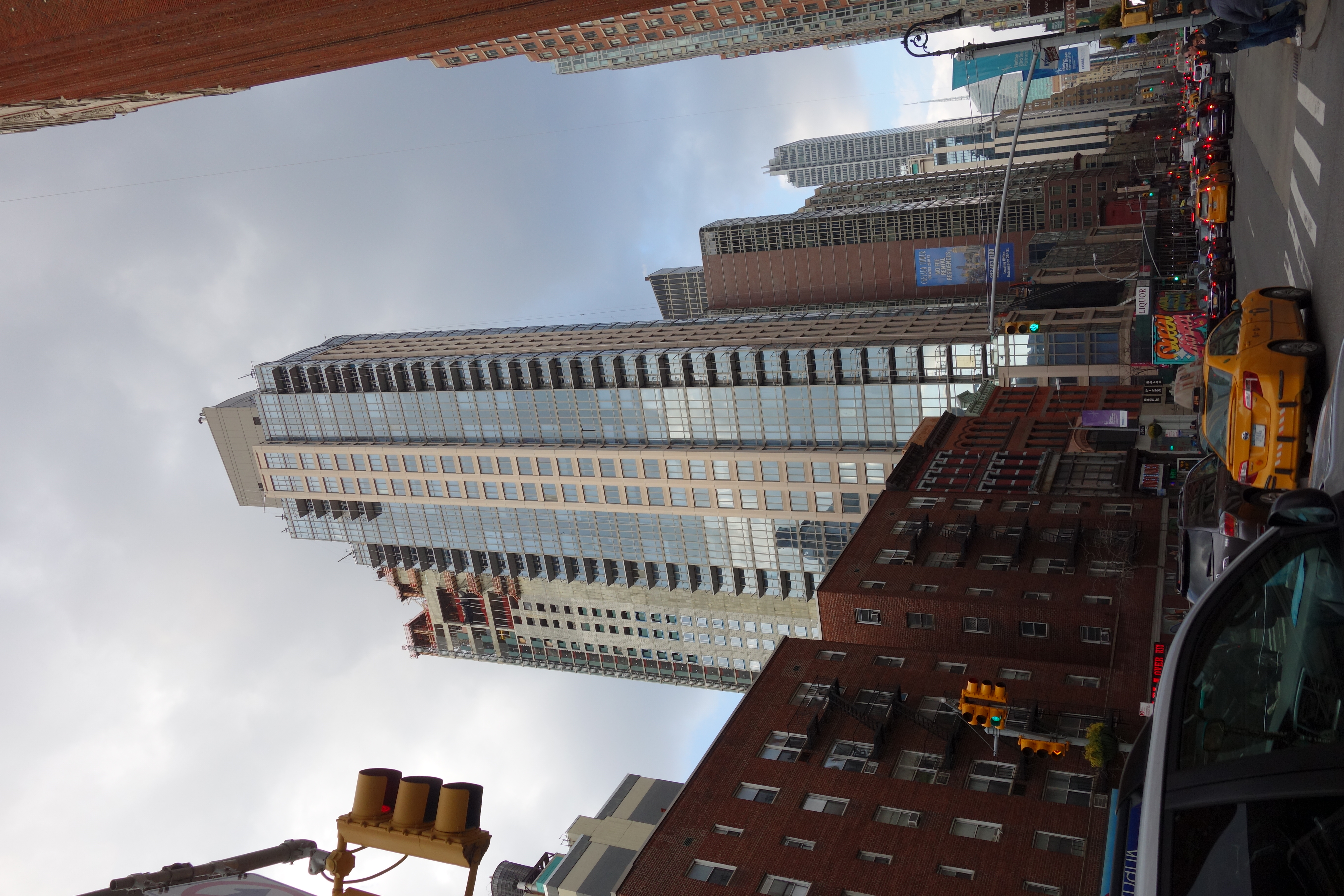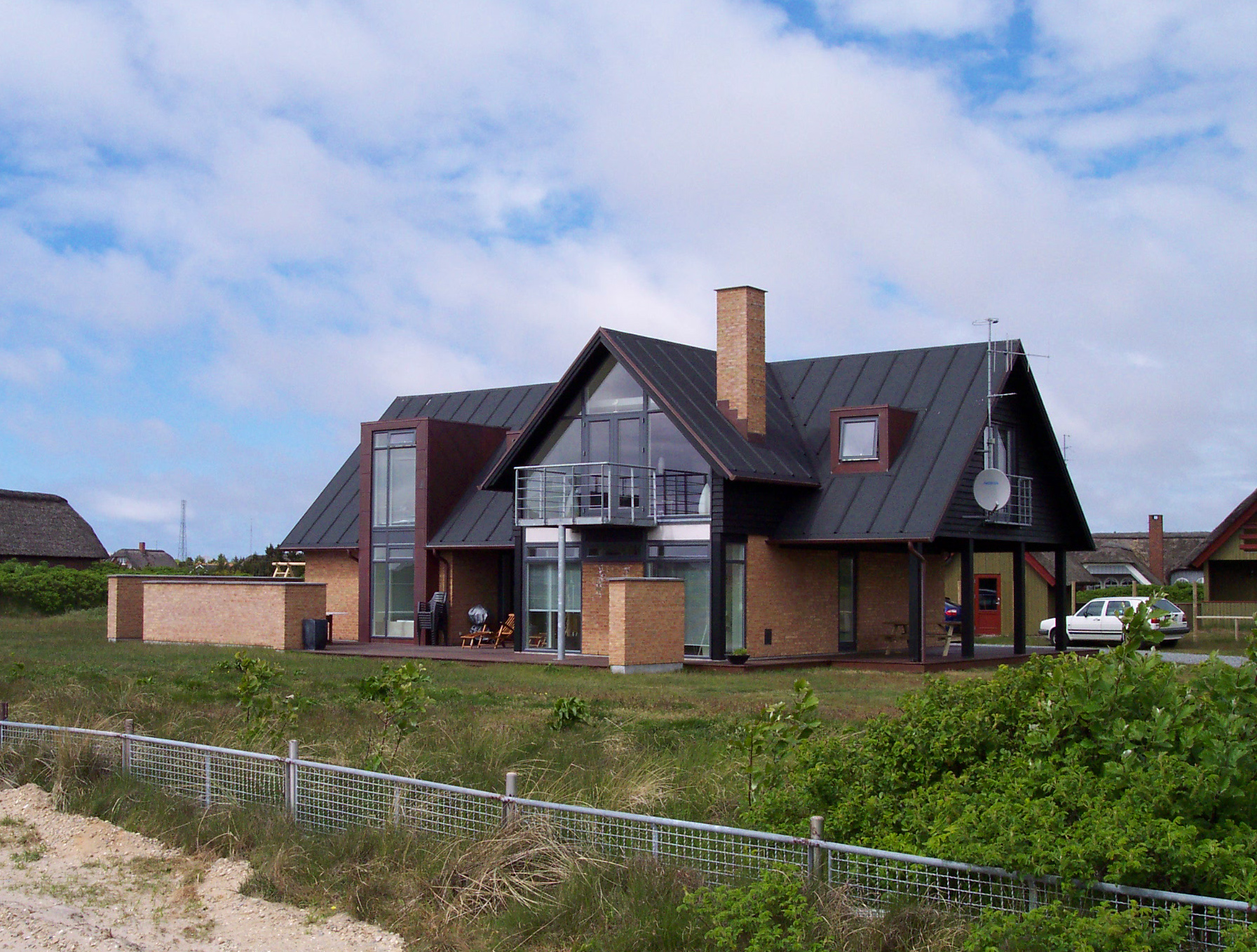|
Daly Grove, Edmonton
Daly Grove is a residential neighbourhood located in the Mill Woods area of south Edmonton, Alberta, Canada. It is a part of the Mill Woods community of Southwood. The neighbourhood is named after Thomas Daly who "developed high quality strains of wheat and oats." According to the 2001 federal census, Development of the neighbourhood began during the 1970s when two out of five (41.2%) of the residences in the neighbourhood were constructed. Another two out of five (40.0%) were built during the 1980s. Most of the remainder were constructed during the early 1990s. According to the 2005 municipal census, the neighbourhood is predominantly single-family dwellings, which account for two out of every three (66%) of all the residences in the neighbourhood. Row houses account for another one in four (24%) of the residences. The remaining 11% of the residences are almost evenly split between duplexes (6% of all residences) and rented apartment An apartment (American Engl ... [...More Info...] [...Related Items...] OR: [Wikipedia] [Google] [Baidu] |
Edmonton
Edmonton is the capital city of the Provinces and territories of Canada, Canadian province of Alberta. It is situated on the North Saskatchewan River and is the centre of the Edmonton Metropolitan Region, which is surrounded by Central Alberta, Alberta's central region, and is in Treaty 6, Treaty 6 territory. It anchors the northern end of what Statistics Canada defines as the "Calgary–Edmonton Corridor". The area that later became the city of Edmonton was first inhabited by First Nations in Alberta, First Nations peoples and was also a historic site for the Métis in Alberta, Métis. By 1795, many trading posts had been established around the area that later became the Edmonton census metropolitan area. "Fort Edmonton", as it was known, became the main centre for trade in the area after the 1821 merger of the Hudson's Bay Company and the North West Company. It remained sparsely populated until the Canadian acquisition of Rupert's Land in 1870, followed eventually by the arri ... [...More Info...] [...Related Items...] OR: [Wikipedia] [Google] [Baidu] |
Duplex (building)
A duplex house plan has two living units attached to each other, either next to each other as townhouses, condominiums or one above the other like apartments. By contrast, a building comprising two attached units on two distinct properties is typically considered ''semi-detached'' or ''twin homes'' but is also called a ''duplex'' in parts of the Northeastern United States, Western Canada, and Saudi Arabia. The term "duplex" is not extended to three-unit and four-unit buildings, as they would be referred to with specific terms such as three-family (or triplex) and fourplex (or quadplex/quadruplex) or a more general multiplex. Because of the flexibility of the term, the line between an apartment building and a duplex is somewhat blurred, with apartment buildings tending to be bigger, while duplexes are usually the size of a single-family house. Variants US In dense areas like Manhattan and downtown Chicago, a duplex or duplex apartment refers to a maisonette, a single dwelli ... [...More Info...] [...Related Items...] OR: [Wikipedia] [Google] [Baidu] |
Laurel, Edmonton
Laurel is a neighbourhood in southeast Edmonton, Alberta, Canada Canada is a country in North America. Its Provinces and territories of Canada, ten provinces and three territories extend from the Atlantic Ocean to the Pacific Ocean and northward into the Arctic Ocean, making it the world's List of coun ... that was established in 2007 through the adoption of the Laurel Neighbourhood Structure Plan (NSP). Laurel is located within The Meadows area and was originally identified as Neighbourhood 4 within The Meadows Area Structure Plan (ASP). It is bounded on the west by 34 Street, north by 23 Avenue, east by 17 Street, and south by Anthony Henday Drive. Demographics In the City of Edmonton's 2012 municipal census, Laurel had a population of living in dwellings. Surrounding neighbourhoods References Neighbourhoods in Edmonton {{Edmonton-geo-stub ... [...More Info...] [...Related Items...] OR: [Wikipedia] [Google] [Baidu] |
Pollard Meadows, Edmonton
Pollard Meadows is a residential neighbourhood located in the Mill Woods area of south Edmonton, Alberta, Canada. It is a part of the Mill Woods community of Southwood. Demographics In the City of Edmonton's 2012 municipal census, Pollard Meadows had a population of living in dwellings, a 2.1% change from its 2009 population of . With a land area of , it had a population density of people/km2 in 2012. Residential development Development of the neighbourhood, according to the 2001 federal census, began during the 1970s when one out of three (33.7%) of the residences in the neighbourhood were constructed. Just under half the residences (45.5%) were built during the following decade, the 1980s. Most of the remainder were constructed during the early 1990s. According to the neighbourhood description on the City of Edmontomap utility residential development in Pollard Meadows is not yet complete. According to the 2005 municipal census, the neighbourhood has a mixture of ho ... [...More Info...] [...Related Items...] OR: [Wikipedia] [Google] [Baidu] |
Silver Berry, Edmonton
Silver Berry is a residential neighbourhood in south east Edmonton, Alberta, Canada. It is one of the neighbourhoods located within The Meadows area. Residences in Silver Berry are a mixture of single-family dwellings (80%), duplexes (15%) and row house A terrace, terraced house (British English, UK), or townhouse (American English, US) is a type of medium-density housing which first started in 16th century Europe with a row of joined houses party wall, sharing side walls. In the United States ...s (5%). The majority of residences (96%) in the neighbourhood are owner occupied. The neighbourhood is bounded on the east by 17 Street, on the west by 34 Street, on the north by Mill Creek Ravine and the south by 23 Avenue. 34 Avenue stops at 34 Street, turning into Silver Berry Road, going through Silver Berry and stopping at 17 Street. Demographics In the City of Edmonton's 2012 municipal census, Silver Berry had a population of 8089 living in 2567 dwellings, a 24.1% c ... [...More Info...] [...Related Items...] OR: [Wikipedia] [Google] [Baidu] |
Bisset, Edmonton
Bisset is a residential neighbourhood located in the Mill Woods area of Edmonton, Alberta, Canada. The neighbourhood "is named for Judge Athelstan Bisset, Q.C." It is a part of the Mill Woods community of Ridgewood. Residential development in the area began during the 1960s, with most residential construction (70%) occurring during the 1980s. Just over half (56%) of the residences in the neighbourhood are single-family dwellings. Another 25%, or one in four, residences are apartments in low-rise buildings with fewer than five stories. Row houses make up another 15% of residences, with most of the remainder being duplexes. Approximately two out of three residences (65.1%) are owner occupied. However, a high proportion (34.9%) of the residences in the neighbourhood are rented. Almost one out of two (45.9%) of households have one or two persons. There is also a significant proportion of residences (41.4%) with four or five persons. The average number of people per house ... [...More Info...] [...Related Items...] OR: [Wikipedia] [Google] [Baidu] |
Weinlos, Edmonton
Weinlos is a residential neighbourhood located in the Mill Woods area of Edmonton, Alberta, Canada. The community is represented by the Ridgewood Community League, established in 1982, which maintains a community hall and outdoor rink located at Mill Woods Road East and 37 Avenue. Geography Weinlos is bounded on the west by 50 Street, on the east by Mill Woods Road East, on the north by 34 Avenue, and on the south by 23 Avenue. Demographics In the City of Edmonton's 2012 municipal census, Weinlos had a population of living in dwellings, a -1.1% change from its 2009 population of . With a land area of , it had a population density of people/km2 in 2012. Residential development The most common type of residence in the neighbourhood is the single-family dwelling (71% of residences) followed by apartments in low-rise buildings with fewer than five stories (21%), duplexes (5%) and row house A terrace, terraced house (British English, UK), or townhouse (American Englis ... [...More Info...] [...Related Items...] OR: [Wikipedia] [Google] [Baidu] |
Apartment
An apartment (American English, Canadian English), flat (British English, Indian English, South African English), tenement (Scots English), or unit (Australian English) is a self-contained housing unit (a type of residential real estate) that occupies part of a building, generally on a single story. There are many names for these overall buildings (see below). The housing tenure of apartments also varies considerably, from large-scale public housing, to owner occupancy within what is legally a Condominium (living space), condominium (strata title or commonhold) or leasehold, to tenants renting from a private landlord. Terminology The term ''apartment'' is favoured in North America (although in some Canadian cities, ''flat'' is used for a unit which is part of a house containing two or three units, typically one to a floor). In the UK and Australia, the term ''apartment'' is more usual in professional real estate and architectural circles where otherwise the term ''flat'' is u ... [...More Info...] [...Related Items...] OR: [Wikipedia] [Google] [Baidu] |
Renting
Renting, also known as hiring or letting, is an agreement where a payment is made for the use of a good, service or property owned by another over a fixed period of time. To maintain such an agreement, a rental agreement (or lease) is signed to establish the roles and expectations of both the tenant and landlord. There are many different types of leases. The type and terms of a lease are decided by the landlord and agreed upon by the renting tenant. History Various types of rent are referenced in Roman law: rent (''canon'') under the long leasehold tenure of Emphyteusis; rent (''reditus'') of a farm; ground-rent (''solarium''); rent of state lands (''vectigal''); and the annual rent (''prensio'') payable for the ''jus superficiarum'' or right to the perpetual enjoyment of anything built on the surface of land. Reasons for renting There are many possible reasons for renting instead of buying, for example: *In many jurisdictions (including India, Spain, Australia, Unit ... [...More Info...] [...Related Items...] OR: [Wikipedia] [Google] [Baidu] |
Row House
A terrace, terraced house (British English, UK), or townhouse (American English, US) is a type of medium-density housing which first started in 16th century Europe with a row of joined houses party wall, sharing side walls. In the United States and Canada these are sometimes known as row houses or row homes. Terrace housing can be found worldwide, though it is quite common in Europe and Latin America, and many examples can be found in the United Kingdom, Belgium, United States, Canada, and Australia. The Place des Vosges in Paris (1605–1612) is one of the early examples of the type. Although in early larger forms it was and still is used for housing the wealthy, as cities and the demands for ever smaller close housing grew, it regularly became associated with the working class. Terraced housing has increasingly become associated with gentrification in certain inner-city areas, drawing the attention of city planning. Origins and nomenclature Though earlier Gothic Architectu ... [...More Info...] [...Related Items...] OR: [Wikipedia] [Google] [Baidu] |
Provinces And Territories Of Canada
Canada has ten provinces and three territories that are sub-national administrative divisions under the jurisdiction of the Constitution of Canada, Canadian Constitution. In the 1867 Canadian Confederation, three provinces of British North America—New Brunswick, Nova Scotia, and the Province of Canada (which upon Confederation was divided into Ontario and Quebec)—united to form a federation, becoming a fully Independence, independent country over the next century. Over its history, Canada's international borders have changed several times as it has added territories and provinces, making it the List of countries and dependencies by area, world's second-largest country by area. The major difference between a Canadian province and a territory is that provinces receive their power and authority from the ''Constitution Act, 1867'' (formerly called the ''British North America Acts, British North America Act, 1867''), whereas territories are federal territories whose governments a ... [...More Info...] [...Related Items...] OR: [Wikipedia] [Google] [Baidu] |
Single-family Detached Home
A single-family detached home, also called a single-detached dwelling, single-family residence (SFR) or separate house is a free-standing residential building. It is defined in opposition to a multi-family residential dwelling. Definitions The definition of this type of house may vary between legal jurisdictions or statistical agencies. The definition, however, generally includes two elements: * Single-family (home, house, or dwelling) means that the building is usually occupied by just one household or family and consists of just one dwelling unit or suite. In some jurisdictions, allowances are made for basement suites or accessory dwelling units without changing the description from "single-family". It does exclude, however, any short-term accommodation (hotel, motels, inns), large-scale rental accommodation ( rooming or boarding houses, apartments), or condominia. * Detached (house, home, or dwelling) means that the building does not share walls with other ho ... [...More Info...] [...Related Items...] OR: [Wikipedia] [Google] [Baidu] |




